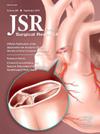Development and Validation of a Discharge Disposition Prediction Model in Injured Adults
IF 1.8
3区 医学
Q2 SURGERY
引用次数: 0
Abstract
Introduction
Early prediction of posthospital disposition is crucial for counseling and planning, particularly for adults away from age extremes, given the greater uncertainty about returning home or requiring postacute care among these patients. We aimed to create a prediction model for discharge disposition using data from the first 24 h of admission.
Methods
We conducted a retrospective cohort study using data from the National Trauma Data Bank encompassing patients treated from 2007 to 2016, focusing on individuals aged 35-70, categorized by discharge disposition. Our objective was to predict discharge outcomes – home, rehabilitation, skilled nursing facility, or mortality – employing machine learning techniques based on patient factors, including demographics, comorbidities, injuries, and early resource utilization. Each base model underwent training and parameter tuning to optimize the F1 score and was then evaluated on unseen data. The top three base models were chosen to build a stack ensemble model, and performance was assessed using area under the receiver operating characteristics (AUC), F1, recall, and precision metrics through the one-versus-rest approach, comparing each class. External validation was conducted using data from the Pennsylvania Trauma Outcomes Study.
Results
A total of 2,342,703 patients were included. A stack ensemble model was built using the three top performers, which yielded AUCs from 0.73 to 0.97 for each class on held out National Trauma Data Bank data. This stacked model demonstrates strong generalizability across Pennsylvania Trauma Outcomes Study, with AUCs spanning from 0.71 to 0.97.
Conclusions
We created a stacked ensemble model that predicts discharge disposition for adults outside of the extremes of age with injuries within 24 h of admission. Further validation is warranted to show the potential benefits of this model for planning and patient and family guidance.
受伤成人出院倾向预测模型的建立与验证
早期预测出院后的处置是至关重要的咨询和规划,特别是成年人远离年龄极端,考虑到更大的不确定性回家或需要急性后护理这些病人。我们的目的是利用入院前24小时的数据建立一个出院处置的预测模型。方法采用国家创伤数据库2007 - 2016年收治的患者数据进行回顾性队列研究,以35-70岁的患者为研究对象,按出院处置分类。我们的目标是预测出院结果——回家、康复、熟练护理设施或死亡率——采用基于患者因素的机器学习技术,包括人口统计学、合并症、损伤和早期资源利用。每个基本模型都经过训练和参数调整以优化F1分数,然后对未见过的数据进行评估。选择前三个基本模型来构建堆栈集成模型,并通过one- vs -rest方法使用接收器操作特征(AUC)下的面积、F1、召回率和精度指标来评估性能,比较每个类别。使用宾夕法尼亚创伤结局研究的数据进行外部验证。结果共纳入2342703例患者。使用三个表现最好的班级建立了一个堆栈集成模型,每个班级的auc从0.73到0.97不等,并提供了国家创伤数据库数据。该叠加模型在宾夕法尼亚创伤结果研究中显示出很强的通用性,auc范围为0.71至0.97。结论:我们创建了一个堆叠集成模型,用于预测入院24小时内受伤的非极端年龄成人的出院处置。进一步的验证是必要的,以显示该模型的规划和病人和家庭指导的潜在利益。
本文章由计算机程序翻译,如有差异,请以英文原文为准。
求助全文
约1分钟内获得全文
求助全文
来源期刊
CiteScore
3.90
自引率
4.50%
发文量
627
审稿时长
138 days
期刊介绍:
The Journal of Surgical Research: Clinical and Laboratory Investigation publishes original articles concerned with clinical and laboratory investigations relevant to surgical practice and teaching. The journal emphasizes reports of clinical investigations or fundamental research bearing directly on surgical management that will be of general interest to a broad range of surgeons and surgical researchers. The articles presented need not have been the products of surgeons or of surgical laboratories.
The Journal of Surgical Research also features review articles and special articles relating to educational, research, or social issues of interest to the academic surgical community.

 求助内容:
求助内容: 应助结果提醒方式:
应助结果提醒方式:


